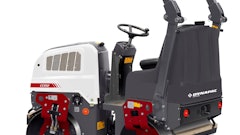
There are different types of compaction equipment designed for various applications, but the basic goal is the same: to compact the soil in order to provide a solid foundation. Technically, soil compaction is the removal of air voids from the soil by applied force. With fewer air voids, soil becomes more dense and is able to support greater weight.
Mechanical soil compaction accelerates the natural process of the soil settling and, in some cases, makes construction possible in marginal building sites. In a nutshell, rammers are used in confined areas on cohesive/clay soils. Plate compactors are used in confined areas, usually to compact sand and gravel-type soils, and trench compactors are used on cohesive soils in trenches or larger areas and adjacent to structures. Choosing the correct machine for the job does rely on a number of factors.
Let the soil be your guide
When selecting the right compaction machine for the job, proper soil identification is the best place to start. Soil is classified into two main categories: granular and cohesive. Granular soils consist mainly of sand and gravel. The particles are coarse and large enough to see with the naked eye.
Granular soils can be molded but will crumble easily. They're best compacted with vibration energy, which reduces the frictional forces at the contact surfaces, allowing the particles to fall freely under their weight. At the same time, as the soil particles are vibrating they become momentarily separated from each other, allowing them to turn and twist until they can find a position that limits their movement.
Granular soils are loosely bound, which means that moisture drains easily. They make an excellent base for building on and do not require impact or ramming compaction.
Read next: The Science of Soil Compaction
On the other hand, cohesive soils are made up of silts and clays. The particles are very small and feel smooth when rubbed between your fingers. When wet, cohesive soils are sticky and can be molded or rolled into almost any shape. When dry, this soil type tends to be very hard and difficult to crumble.
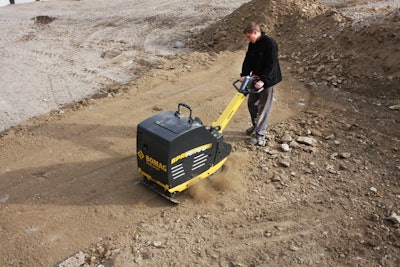
Some soils are good for building on while others are not. The goal with compaction is to increase load-bearing capacity, prevent settling and reduce water seepage and damage from frost. If soil is not compacted properly, construction built on the foundation will not be properly supported.
Types of soil compaction equipment
Once the type of soil is identified, consider the size of the job to determine what piece of equipment will compact the soil type in the most efficient amount of time. Vibratory plates are very maneuverable so they're ideal for confined areas. Rollers have the advantage in larger, open areas where there is plenty of room to move around.
The same logic applies to rammers. The rammer should be used on cohesive soils in confined areas, and the trench roller (with a padfoot drum) should be used in larger trenches and open areas.
Plates are typically broken down into three classes:
- Forward plates — considered entry level and are mainly used for hardscapes/landscapes like residential jobs or side walks which are smaller and have approximately 2- to 4-in. lifts
- Small to medium reversibles
- Large reversibles
Reversibles are popular with professionals because they can save time and money. They get the job done fast, and they're easier on the operator but are larger and more difficult to transport.
Read next: A Formula for Equipment Cost Recovery
Improving safety with compaction equipment
Soil compaction as an application has not changed very much over the years, but improvements to compaction equipment have been made in the areas of durability, maintenance and operator comfort. What's more, increasing awareness and concern for safety is probably the largest trend affecting compaction equipment.
The concept of safety is growing beyond the traditional concept of protecting an operator from an injury-causing accident. It is now expanding into protecting the operator from long-term exposure to noise, hand arm vibrations and exhaust.
An example of overall operator and jobsite protection can be found in today's trench compactors, which offer either radio frequency or infrared remote-controlled operation. With Wacker Neuson's infrared remote-controlled RTxSC3 trench roller, for example, the operator remains away from the dust and noise of the machine but must keep a line-of-sight from the controller to the receiving eye at all times. This control technology eliminates dangerous blind spots should the unit move behind obstacles and other obstructions or should the operator get distracted, keeping the jobsite and workers better protected.

For its part, BOMAG uses radio frequency remote control on its trench compactors because it allows the operator to keep a safe distance from the trench compactor or the danger zone while providing maximum reliability. BOMAG trench compactors also incorporate the BOMAG Operator Safety System (BOSS) which automatically shuts the machine off if the operator gets within a dangerous distance of the machine while in operation.
When using rammers in trenches, one problem arises: in deep trenches there is nowhere for the exhaust to escape. Carbon monoxide (CO) is a potential health hazard for the operator. In cooperation with the engine company Honda, and in accordance with the Berufsgenossenschaft der Bauwirtschaft (Professional Association for the Construction Industry in Germany) Weber MT developed a low emissions rammer, the SRV 590. The improved emission value of this new model with a GXR 120 engine has brought the risk assessment of this machine down to harmless.
Still, running a rammer is no easy task for an operator when there are thousands of pounds of compaction force hitting the ground at 700 hits per minute. To help lesson the impact for the operator, all Weber MT equipment is equipped with various shock mounts located throughout the machines to ensure operator comfort and smooth operation.
Similarly, the forward-moving vibratory plate compactors offer an additional comfort feature that helps protect the operator from things such as nerve damage, which is typical when working with compaction equipment. However, precise control of machines equipped with a low-vibration guide bar can be quite tricky.
The single-direction CF 1 PRO, CF 2 PRO and CF 3 PRO are all vibratory plates which are specially designed with guide bars that ensure low hand-arm vibrations as well as precise machine control for prolonged use. With this in mind, the guide bar has been decoupled from the handle grip to provide an elastic connection between the two components. The rubber-coated grips are provided with an "absorber" mounted on a high-grade fiber glass bracket by means of small bellows.
Technology helps perfect performance
Compaction performance has been tough to judge, but many of today's machines feature visual compaction indicators to ensure they're utilized within their performance parameters. This is especially useful for less experienced operators. Indicators can safe guard against under compaction and over compaction. Wacker Neuson, for example, offers a system called Compatec compaction control for its larger reversible plates.
Compatec is an easy-to-read display that the operator can see while the machine is in operation. It quickly gives the operator feedback of the relative compaction progress and also alerts the operator when the machine is over compacting material.
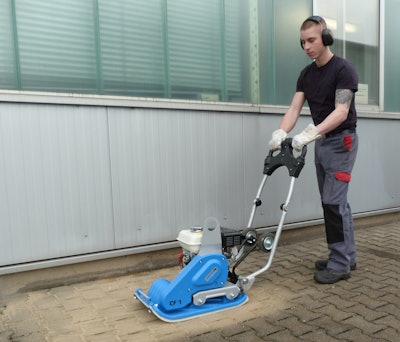
Using frequency band analysis, the system is able to deliver real-time information on the compaction status of the soil, indicating its status to the operator using a scale of light-emitting diodes in the integrated dashboard. When further diodes do not light up during successive passes over the soil, the operator knows that maximum compaction has been reached.
BOMAG reversible plate compactors are offered with the Economizer soil stiffness indicator, which shows instant soil stiffness results on an LED light display. This allows operators to react quickly to changing conditions and gives them the confidence that the job is completed correctly. And in addition to ensuring compaction quality, this saves time and money by allowing jobs to be completed in fewer passes.
Durability and economy
Today's rammers are more durable and longer lasting. Recent changes to Wacker Neuson rammers, for example, include a unique four-stage air filtration system. This includes an improved cyclonic pre-filter designed for more efficient dust removal. The main element with 20% more capacity than the previous design still uses the rammer’s motion to self-clean, and the fourth stage “last chance” filter prevents dust ingestion during filter changes.
Dust is an inherent enemy of engines, so this new filtration system will provide for a virtually dust-free engine for longer life and improved durability.
Fuel economy is another area of technological advancement. With that in mind, BOMAG has developed its ECOMODE control system that provides for minimum fuel consumption. Within ECOMODE, the systems are demand-led, achieving 20% less diesel consumption than conventional machines in the same performance class without ECOMODE.








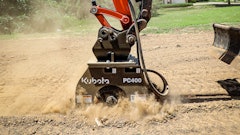




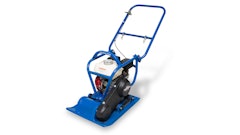
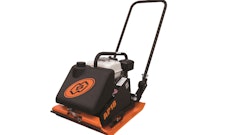

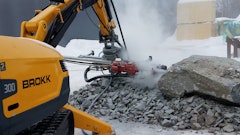



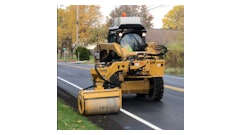
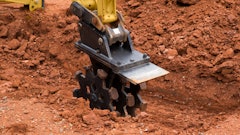




![[VIDEO] Hamm Demos New Easy Drive System at ConExpo](https://img.forconstructionpros.com/files/base/acbm/fcp/image/2017/03/default.58c19074b7f42.png?auto=format%2Ccompress&fit=crop&h=135&q=70&w=240)

